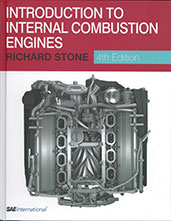Journal Article
Investigation of Combustion Robustness in Catalyst Heating Operation on a Spray Guided DISI Engine, Part II - Measurements of Spray Development, Combustion Imaging and Emissions
2010-04-12
2010-01-0603
In-cylinder spray imaging by Mie scattering has been taken with frame rates up to 27,000 fps, along with high speed video photography of chemiluminescence and soot thermal radiation. Spectroscopic measurements have confirmed the presence of OH*, CH* and C2* emissions lines, and their magnitude relative compared to soot radiation. Filtering for CH* has been used with both the high speed video and a Photo-Multiplier Tube (PMT). The PMT signals have been found to correlate with the rate of heat release derived from in-cylinder pressure measurements. A high power photographic strobe has been used to illuminate the fuel spray. Images show that the fuel spray can strike the ground strap of the spark plug, break up, and a fuel cloud then drifts over and under the strap through the spark plug gap. Tests have conducted at two different spark plug orientations using a single spark strategy.

